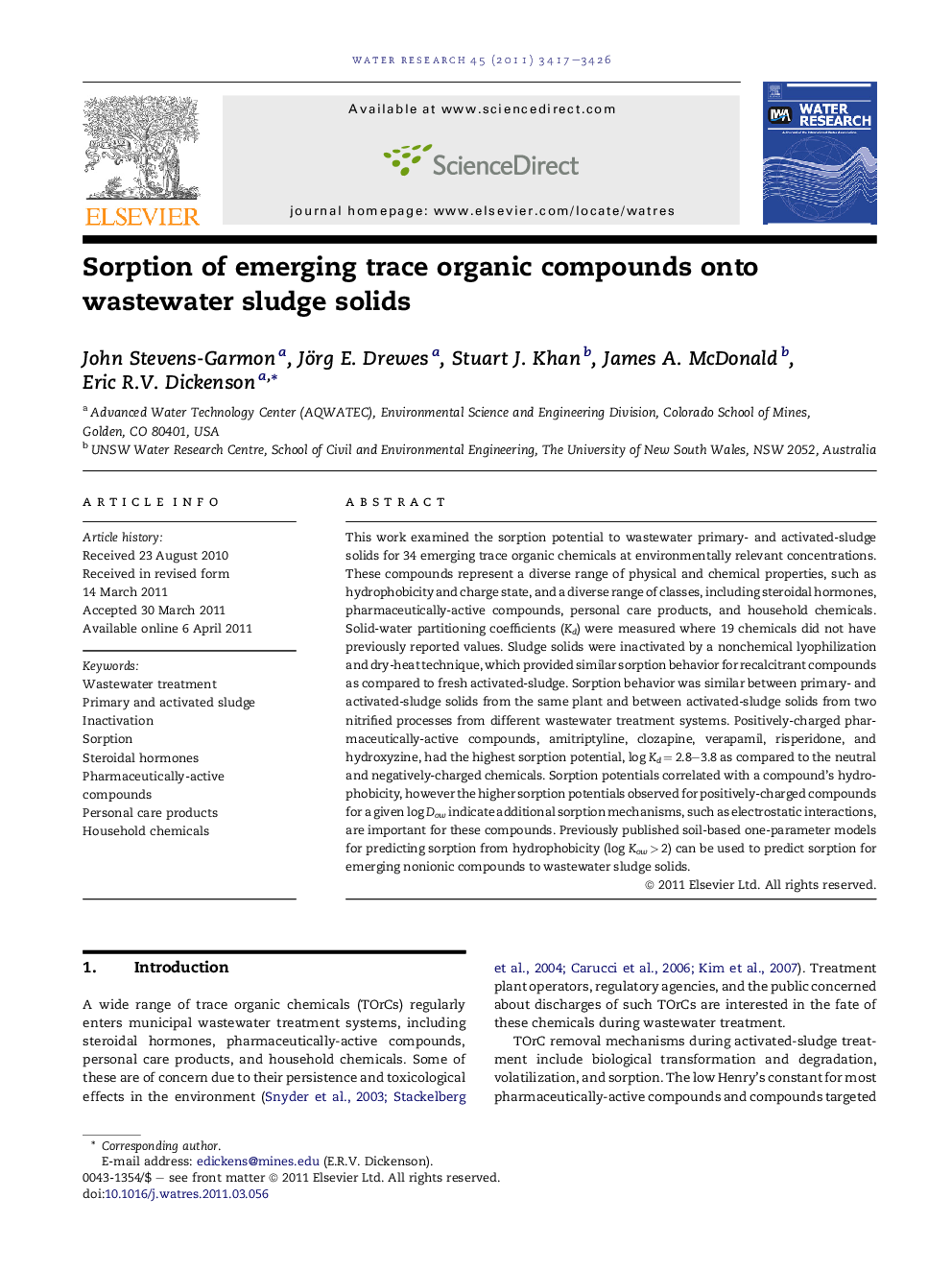| کد مقاله | کد نشریه | سال انتشار | مقاله انگلیسی | نسخه تمام متن |
|---|---|---|---|---|
| 4483518 | 1316890 | 2011 | 10 صفحه PDF | دانلود رایگان |

This work examined the sorption potential to wastewater primary- and activated-sludge solids for 34 emerging trace organic chemicals at environmentally relevant concentrations. These compounds represent a diverse range of physical and chemical properties, such as hydrophobicity and charge state, and a diverse range of classes, including steroidal hormones, pharmaceutically-active compounds, personal care products, and household chemicals. Solid-water partitioning coefficients (Kd) were measured where 19 chemicals did not have previously reported values. Sludge solids were inactivated by a nonchemical lyophilization and dry-heat technique, which provided similar sorption behavior for recalcitrant compounds as compared to fresh activated-sludge. Sorption behavior was similar between primary- and activated-sludge solids from the same plant and between activated-sludge solids from two nitrified processes from different wastewater treatment systems. Positively-charged pharmaceutically-active compounds, amitriptyline, clozapine, verapamil, risperidone, and hydroxyzine, had the highest sorption potential, log Kd = 2.8–3.8 as compared to the neutral and negatively-charged chemicals. Sorption potentials correlated with a compound’s hydrophobicity, however the higher sorption potentials observed for positively-charged compounds for a given log Dow indicate additional sorption mechanisms, such as electrostatic interactions, are important for these compounds. Previously published soil-based one-parameter models for predicting sorption from hydrophobicity (log Kow > 2) can be used to predict sorption for emerging nonionic compounds to wastewater sludge solids.
► Wastewater sludge partitioning coefficients were measured for 34 organic chemicals.
► Sorption behavior was similar between three primary- and activated-sludge solids.
► Positively-charged chemicals had the highest sorption potential.
► Sorption correlated with hydrophobicity for neutral and negatively-charged chemicals.
► One-parameter linear models can be used to predict sorption to sludge solids.
Journal: Water Research - Volume 45, Issue 11, May 2011, Pages 3417–3426